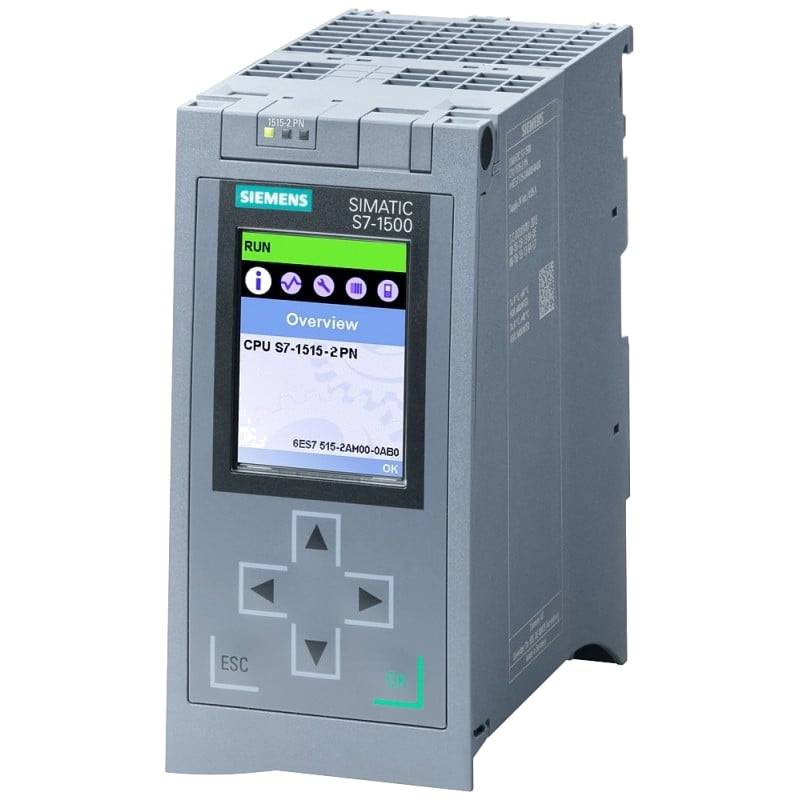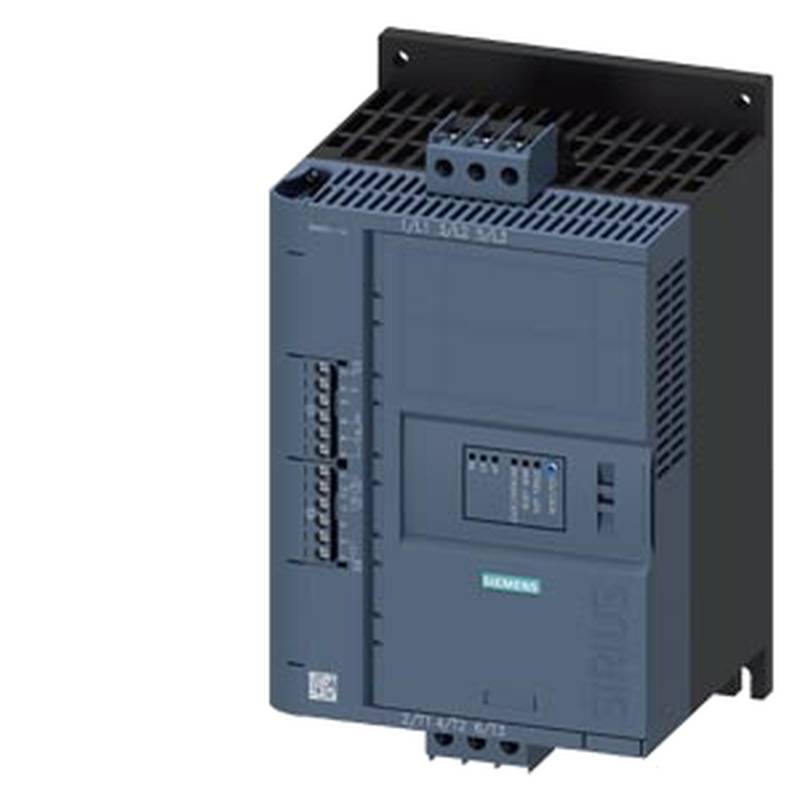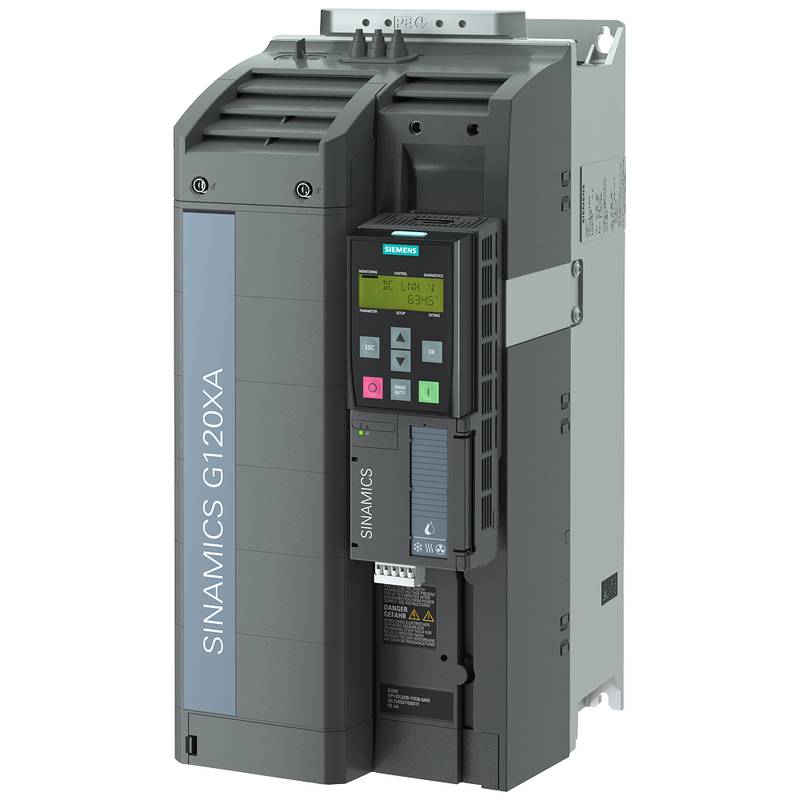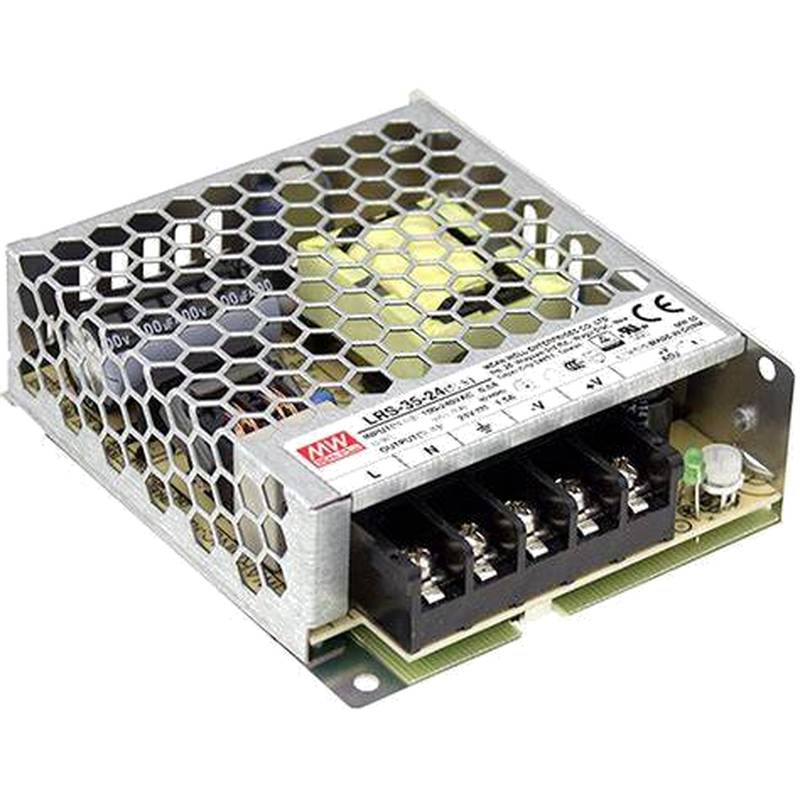
The SIMPHOENIX DX100-4T0900 Advanced VFD Frequency Converter 90kW is engineered for robust performance and superior control in demanding industrial applications. This variable frequency drive (VFD) excels with its high power output of 90kW, enabling precise speed regulation for a wide range of motor-driven equipment. Key advantages include its advanced vector control technology for exceptional torque accuracy and dynamic response, a wide input voltage range for global compatibility, and comprehensive protection features safeguarding both the drive and connected machinery. Essential technical parameters highlight its suitability for heavy-duty operations.
| Parameter | Specification |
| :------------------------ | :------------------------------------------ |
| Model | DX100-4T0900 |
| Rated Power | 90kW (120 HP) |
| Input Voltage | 380V-480V AC (3-phase) |
| Output Voltage | 0-480V AC (3-phase) |
| Output Frequency | 0-600Hz |
| Control Method | Sensorless Vector Control, V/f Control |
| Overload Capacity | 150% for 60 seconds, 180% for 10 seconds |
| Protection Features | Overcurrent, Overvoltage, Undervoltage, Overtemperature, Phase Loss, etc. |
| Communication Options | RS485 (Modbus), Optional fieldbus modules |
| Dimensions (H x W x D) | [Specific dimensions would be detailed here] |
| Ambient Temperature Range | -10°C to +40°C (derating may apply) |
Core Features & Market Positioning
The SIMPHOENIX DX100-4T0900 distinguishes itself through its sophisticated sensorless vector control algorithm, providing outstanding motor performance even under fluctuating loads. This advanced control ensures precise speed and torque regulation, crucial for applications requiring consistent operational parameters. Its robust design and high overload capacity position it as a reliable solution for industries facing rigorous demands, offering a competitive edge through enhanced energy efficiency and extended equipment lifespan. The drive’s modular design also facilitates easier maintenance and potential upgrades.
Key Application Scenarios
This 90kW VFD is ideally suited for a broad spectrum of industrial applications. It offers significant advantages in controlling large pumps and fans, where precise flow and pressure management are critical, leading to substantial energy savings. Heavy-duty machinery such as extruders, conveyors, and mixers benefit from the DX100-4T0900's high starting torque and stable operation. Furthermore, its application extends to HVAC systems, machine tools, and material handling equipment, where its advanced control capabilities ensure optimal process efficiency and reduced mechanical stress.
Practical System Integration Guidance
Integrating the SIMPHOENIX DX100-4T0900 into existing systems is streamlined by its versatile connectivity and user-friendly interface. Proper wiring is paramount; ensure the input power supply is correctly connected to terminals L1, L2, and L3, and the motor leads to T1, T2, and T3, adhering to local electrical codes and grounding standards. For optimal performance with sensorless vector control, motor nameplate data (e.g., rated voltage, current, frequency, speed, pole count) must be accurately entered during commissioning via the control panel or communication interface. Parameter programming allows for fine-tuning acceleration/deceleration ramps, speed limits, and I/O assignments to match specific application requirements.
Operation and Risk Mitigation
Safe and efficient operation of the SIMPHOENIX DX100-4T0900 necessitates adherence to operational guidelines and proactive risk mitigation. Always ensure proper ventilation around the VFD to prevent overheating, and consult the manual for ambient temperature derating requirements. Common troubleshooting involves checking for fault codes displayed on the drive's interface; for instance, an "OC" (Overcurrent) fault may indicate motor issues or an improperly sized drive, while an "OV" (Overvoltage) fault might point to regenerative energy issues. Implementing appropriate braking resistors can mitigate overvoltage conditions during deceleration. Regular visual inspections and adherence to maintenance schedules will prevent unforeseen failures.
Scalability & Long-Term Value
The SIMPHOENIX DX100-4T0900 offers significant scalability and long-term value, supporting integration into evolving industrial environments. Its compatibility with standard communication protocols like Modbus RS485 allows seamless integration into SCADA systems and industrial automation networks for remote monitoring and control. Optional fieldbus modules can expand connectivity to platforms such as Profibus, Profinet, or Ethernet/IP, facilitating its adoption in Industry 4.0 initiatives. This adaptability ensures that the VFD remains a viable component within increasingly connected and intelligent manufacturing setups, providing a robust foundation for future upgrades and system expansions.
Frequently Asked Questions (FAQs)
Q1: What is the primary benefit of the SIMPHOENIX DX100-4T0900's advanced vector control?
The advanced vector control provides precise motor speed and torque regulation. This ensures consistent performance even with changing load conditions. It leads to improved process accuracy and product quality.
This control method enhances dynamic response, allowing for rapid adjustments to speed commands. It minimizes speed deviations under fluctuating torque demands. This is critical for machinery requiring tight operational tolerances.
Furthermore, this technology optimizes motor efficiency by precisely managing the motor's magnetic flux. This translates to significant energy savings over the equipment's operational life. It also reduces motor heating and extends motor lifespan.
Q2: How do I perform initial setup and parameterization for the DX100-4T0900?
Start by ensuring correct power wiring and grounding according to the manual. Then, input essential motor nameplate data accurately into the VFD parameters. This includes voltage, current, power, frequency, and RPM.
Configure basic operational parameters like acceleration/deceleration times, maximum/minimum frequency limits. Set up digital inputs for start/stop commands and speed selection if needed. Consult the parameter list for specific application tuning.
Finally, perform a test run at low speed and gradually increase to operational speed while monitoring motor behavior and VFD status. Adjust parameters as necessary for optimal performance and safety.
Q3: Can the SIMPHOENIX DX100-4T0900 be used with different types of AC motors?
Yes, the DX100-4T0900 is designed to control standard three-phase induction motors. It supports both standard V/f control and advanced sensorless vector control modes. Ensure the motor's voltage and frequency ratings match the VFD's capabilities.
For optimal performance, especially in demanding applications requiring high torque at low speeds, sensorless vector control is recommended. Accurate motor data entry is crucial for this mode. Consult the VFD manual for specific motor compatibility guidelines.
While primarily for induction motors, with appropriate configuration and potential external devices, it may be adaptable for some synchronous reluctance motors. Always verify compatibility with SIMPHOENIX support for non-standard motor types.
Q4: What are the typical applications for a 90kW VFD like the DX100-4T0900?
This VFD is ideal for high-power applications such as large industrial pumps and fans in water treatment or HVAC systems. It enables precise flow and pressure control while significantly reducing energy consumption. Its robust torque capability makes it suitable for driving large mixers and agitators.
Other common uses include heavy-duty conveyors, extruders in plastic manufacturing, and large-scale ventilation systems in mines or tunnels. The 90kW rating ensures it can handle the starting torque and continuous operation demands of substantial machinery.
It also finds application in cement plants for kilns and mills, as well as in the paper industry for large rollers and drives. Any industrial process requiring variable speed and high power output is a potential application.
Q5: How does the DX100-4T0900 handle overload conditions?
The DX100-4T0900 offers robust overload protection, capable of handling 150% of rated current for 60 seconds. It can also manage 180% of rated current for 10 seconds, providing ample margin for starting high-inertia loads. This ensures uninterrupted operation during transient high-demand periods.
If an overload condition persists beyond these limits, the VFD will trigger an overcurrent fault (OC fault) and safely shut down the motor. This protects both the VFD and the motor from damage caused by excessive current draw. The specific trip times and levels can often be programmed.
For applications with very high transient overloads, consider using a VFD with a higher capacity or implementing external braking solutions. Proper motor selection and VFD sizing are critical to prevent nuisance tripping and ensure longevity.
Q6: What communication protocols does the SIMPHOENIX DX100-4T0900 support?
The standard configuration of the DX100-4T0900 includes an RS485 communication port. This port supports the Modbus RTU protocol, enabling seamless integration with PLCs, HMIs, and SCADA systems for monitoring and control. This allows for remote operation and data acquisition.
For integration into more complex networks, optional fieldbus modules are available. These modules can provide support for popular industrial networks such as PROFINET, PROFIBUS DP, EtherNet/IP, and DeviceNet. This enhances its versatility in diverse automation architectures.
This broad communication support ensures the VFD can be a connected device within an Industry 4.0 framework. It facilitates centralized management, diagnostics, and performance optimization across multiple machines.
Q7: What are the environmental considerations for installing the DX100-4T0900?
The DX100-4T0900 is designed for operation within an ambient temperature range of -10°C to +40°C. However, for continuous operation at the upper end of this range, or at higher altitudes, power derating may be required to prevent overheating. Ensure adequate ventilation around the drive.
It should be installed in a clean environment, free from excessive dust, corrosive gases, and moisture. Consider installing it in an enclosure rated for the specific industrial environment to protect it from contaminants and physical damage. IP ratings of enclosures should be suitable.
Proper grounding is essential for safety and to prevent electromagnetic interference (EMI). Ensure the installation site complies with all relevant electrical codes and safety regulations for industrial equipment.
Q8: How can I access and change parameters on the DX100-4T0900?
Parameter access is typically done via the VFD's integrated control keypad and LED display. Navigate through menus using the provided buttons to select, view, and modify parameter values. Read-only parameters and configurable parameters are usually distinguished.
For more advanced configuration or batch programming, the drive supports connection to a PC via its RS485 port using specialized software. This software provides a user-friendly interface for parameter management, diagnostics, and firmware updates. It allows saving and loading parameter sets.
Always refer to the user manual for the specific parameter numbers and their functions. It is crucial to understand the implications of changing certain parameters, especially those related to motor control and safety interlocks, to avoid operational issues.
Q9: What kind of protection features are built into the SIMPHOENIX DX100-4T0900?
The DX100-4T0900 incorporates comprehensive protection mechanisms to safeguard the drive and motor. These include protection against overcurrent, overvoltage, undervoltage, and phase loss on both input and output sides. It also offers motor thermal overload protection and heatsink overtemperature protection.
Additional protections typically include output phase loss, short circuit protection, and earth fault protection, preventing damage during fault conditions. It also monitors for stalls and provides restart inhibition after faults. These features enhance operational safety and equipment reliability.
These integrated protections minimize the risk of component damage, reduce unplanned downtime, and contribute to a safer working environment. They are critical for the longevity and consistent performance of the connected motor and driven equipment.
Q10: Is the SIMPHOENIX DX100-4T0900 suitable for energy-saving applications?
Yes, the DX100-4T0900 is highly effective for energy-saving applications, particularly with centrifugal loads like pumps and fans. By precisely controlling motor speed to match demand, it can significantly reduce energy consumption compared to mechanical throttling or bypass systems. The energy-saving algorithm further optimizes this.
Its advanced vector control and V/f control modes allow for efficient operation across a wide speed range. Even at reduced speeds, the VFD maintains high motor efficiency, minimizing wasted energy. This efficiency gain is substantial in systems with variable load profiles.
Implementing the DX100-4T0900 can lead to considerable operational cost reductions through lower electricity bills. The payback period for the VFD investment is often short, making it an economically sound choice for energy conservation initiatives in industrial settings.

























